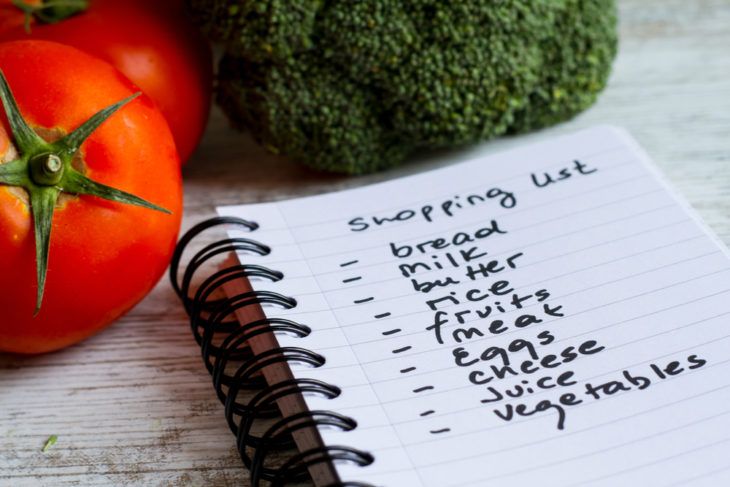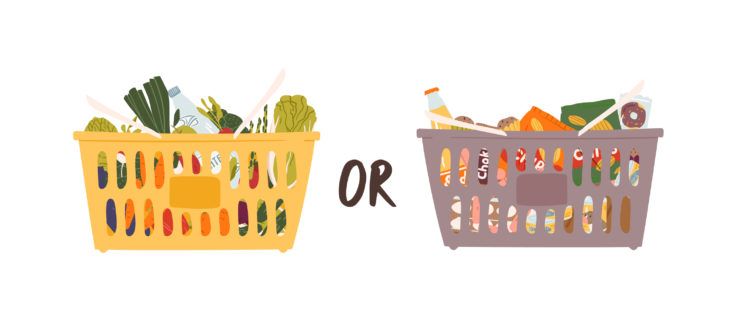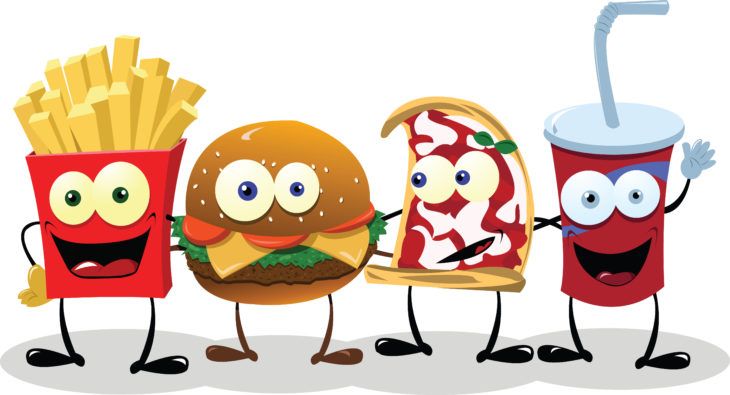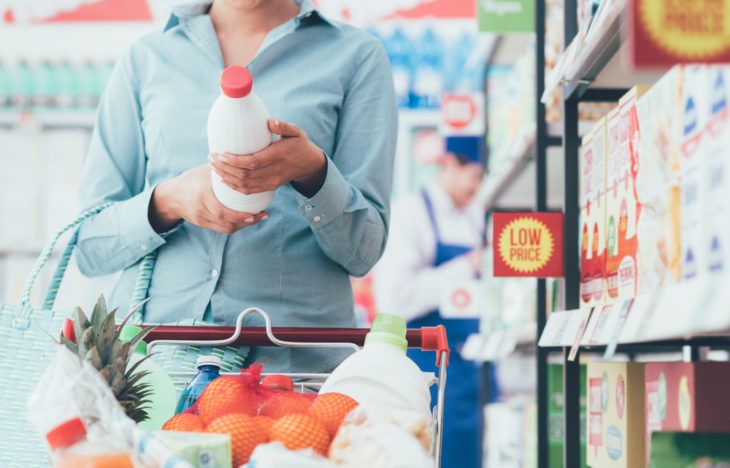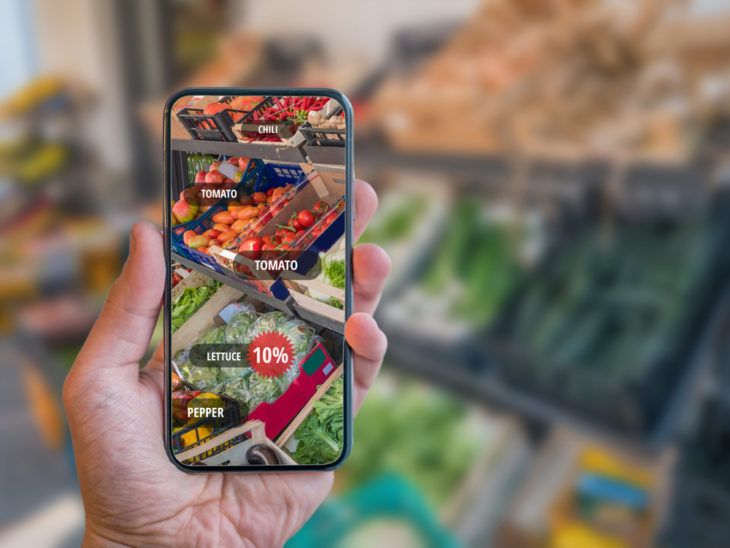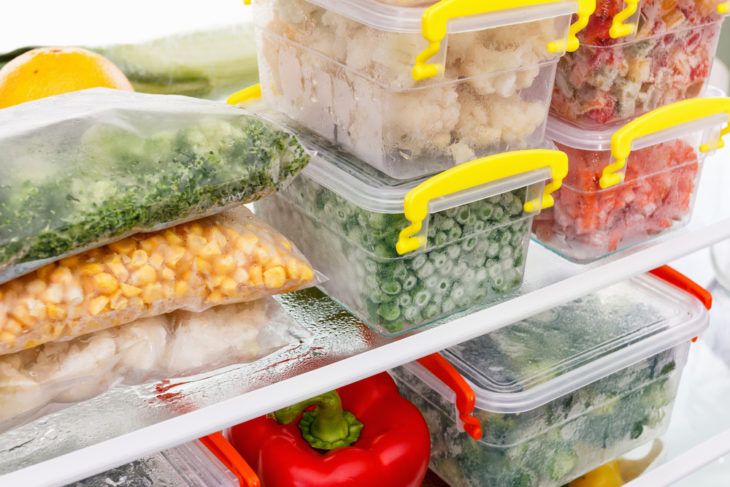If you are like most people, the money you spend to feed your family can quickly eat up a good chunk of your monthly income. For those struggling to make ends meet, this can pose an even bigger challenge.
To make things even more difficult, a healthy diet in many cases can cost more money. Fresh fruits and vegetables are expensive. So are healthy meats, fish and poultry. Keep in mind that grocery stores are a business and they use well-researched tricks to get you to spend and eat more, not less.
There are a few steps you can take to help you choose healthy foods while at the same time protecting your wallet…
Plan Ahead
Healthy eating starts with making good choices in the grocery store. Before you even step out the door to go grocery shopping, plan your meals for the week and create your shopping list from this menu. It doesn’t take much time and spares you from having to make a quick trip to the store when you run out of an ingredient. To save even more money use coupons, check grocery flier specials and incorporate these items into your weekly menu.
You may also wish to consult Canada’s Food Guide or MyPyramid, a government nutrition website when making your menu for the week. A few minutes spent planning ahead can help save time, money and aggravation as well as make it easier to eat a well-balanced diet.
Shop Outside The Aisles First
The outer aisles are where the healthiest foods are located. Fruits, vegetables, milk and dairy products as well as meat and fish can normally be found around the perimeter of the store.
The center aisles contain junk and processed foods. Go to the outside aisles first and spend the most time here. Remember to “hug the walls” when you shop.
Choose “Clean” Foods Whenever Possible
Try to choose foods as close to their natural state as possible. This ensures maximum vitamin, mineral and nutrition content. Foods are clean from added chemicals or processing.
Try to stick to foods with no more than five ingredients. Avoid anything with artificial chemicals or ingredients you can’t even pronounce. Choose 100 percent fruit juice or 100 percent whole grain products whenever you can.
Beware of Foods with Cartoons on the Labels
Be careful of products with cartoons on their packaging. These products are marketed to children and usually have a high sugar or salt content and limited national value.
Many breakfast bowls of cereal, lunch snacks and canned pasta fall into this category. These foods can be found in the center aisles and usually at eye level.
Stick to Your List
A well-thought list can save you time and a lot of money. Buy only the items on our list. If you’ve done your homework ahead of time you won’t be sidetracked by in-store specials. You’ll already have sized up any flier specials and know exactly how many of each item you need.
When grocery stores put a limit on the amount you can buy, for example, 6 items per family, they’re actually encouraging you to buy more than you’d originally planned. Limiting the amount you can buy makes the item appear scarce and makes you subconsciously want to stockpile as much as you can. Sticking to your list can avoid this.
Look Up and Down
Expensive brand name items tend to be placed at eye level. They also have fancier packaging using more appealing colors. Stores will often place these items on sale. For example, 50 cents off if you buy two or more.
Cross-check prices against no-name or store brand items. Oftentimes the brand name items, even when on sale are still more expensive than no-name or store brands.
Buy in Bulk
Buying in bulk for non-perishables is usually more economical. This applies to toilet paper, paper towels, laundry and dish soap, shampoos and toiletries, etc. However, when you buy food in bulk, especially snack foods, you may not realize any savings at all.
This is because the more you have in the house, the more you eat. Portion control can become a problem. When buying cases of canned food, avoid any damaged or dented cans as these may decrease the shelf life of the food within.
Read the Label
Reading the ingredient list on packaged or processed foods is important to help make healthier choices. Watch the salt (sodium) and sugar content. If these ingredients appear at the top of the list then they are present in large amounts. Choose low salt and sugar foods.
Limiting foods to those containing 5 ingredients or less is also a good idea. Make sure to look at the expiry date. For example, milk and yogurt that expires first are put at the front, so reach for bags at the back for longer shelf life.
Use an App
A grocery shopping app can easily be downloaded onto your phone to assist you with preparing your meal menus, and shopping lists, and keeping track of specials and some can be used instead of coupons. Checkout51, Ibotta, and Snapsaves give you money back, anywhere from a few cents to a few dollars after you buy particular items. You photograph the receipt, send it to them and they add money to your account. Once it reaches $20, they mail you a check.
GasBuddy helps you find the cheapest gas in your area and enters you in a draw for $100 free gas. RedFlagDeals forums are a great place to browse to see what the hardcore deal savers are advising. Flipp organizes mailbox fliers onto an app to make them more easily searchable. PC Plus allows you to earn points and free groceries. Those points can add up quickly. The card is free, you simply present it to the cashier every time you go shopping and watch the points add up.
No-Name Can Be Your Friend
No-name or store-brand foods can be just as nutritious as Name-brand items. Compare prices. On occasion Name, brand items on sale may be cheaper than store brands but the reverse can also be true. Cheaper brands tend to be placed on the top or bottom shelves so be sure to check them first.
You can save a substantial amount of money by purchasing a no-name or store brands. If you check the ingredient list you may notice that they are exactly the same, the only difference is the labeling, positioning and price.
Invest in a Small Freezer
Purchasing a small freezer will allow you to buy frozen foods, meats, fish, and poultry on sale and stockpile these items for later use. This allows you to take advantage of sales and can reduce your overall spending.
For example, turkey is cheap, nutritious meat but is not available in large quantities all year round. Many people buy extra at holidays, like Christmas and thanksgiving, and freeze for later use.

 Home
Home Health
Health Diet & Nutrition
Diet & Nutrition Living Well
Living Well More
More